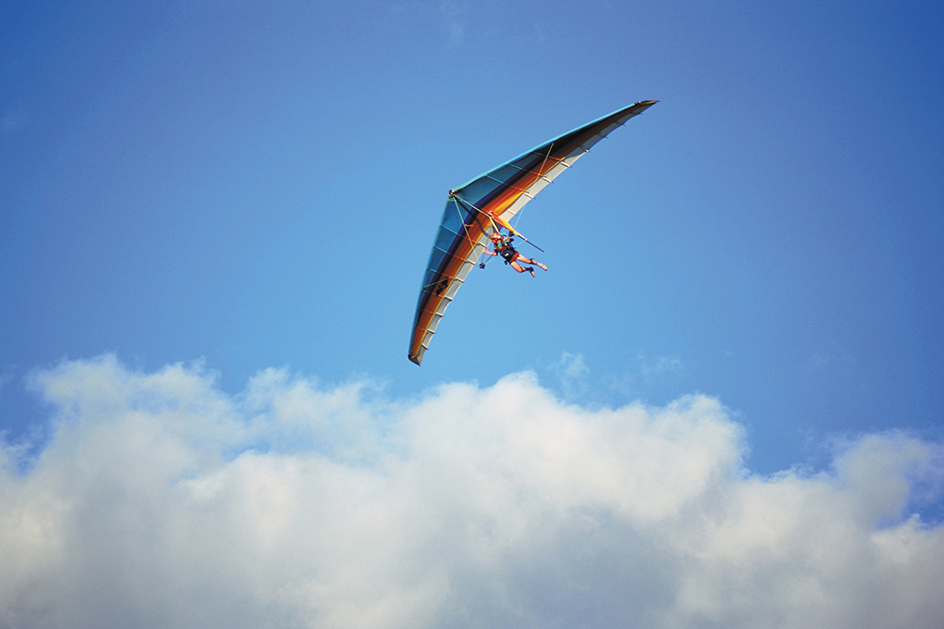Hang gliding is an aviation sport in which an individual on a glider flies on air currents, sometimes traveling great distances. Pilots can easily fly 100 miles (160 kilometers) in a single flight. The sport developed in the United States in the early 1970’s and has gained worldwide popularity.

Hang gliders consist of an aluminum or graphite frame covered with a fabric sail shaped like a pair of wings. A typical wingspan is about 30 feet (9 meters) across. A hang glider can weigh from 45 to 80 pounds (20 to 36 kilograms). In flight, the pilot is enclosed in a harness attached under the glider. By maneuvering a control bar, the pilot can shift weight sideways to turn, and forward or backward to change speed.
Loading the player...Hang gliding
There are three basic launch methods. One is foot launching, in which a pilot faces into the wind and runs down a slope until airborne. Another method, suitable for flat regions, involves towing the glider with a vehicle or boat until the glider reaches the desired altitude. Then the pilot releases the tow rope. In a third method, called aerotowing, a small airplane called an ultralight tows the glider up to an altitude of between 1,000 and 3,000 feet (305 and 915 meters).
Hang gliding pilots require training to acquire the needed safety skills. The United States Hang Gliding and Paragliding Association, in Colorado Springs, Colorado, certifies instructors, maintains a rating system, and offers insurance. The International Hang Gliding and Paragliding Commission (Commission Internationale de Vol Libre or CIVL) in Lausanne, Switzerland, governs international competition in the sport.
See also Glider .
